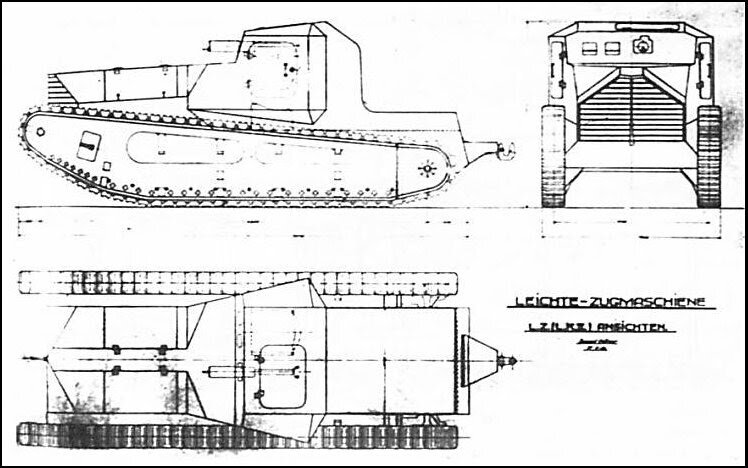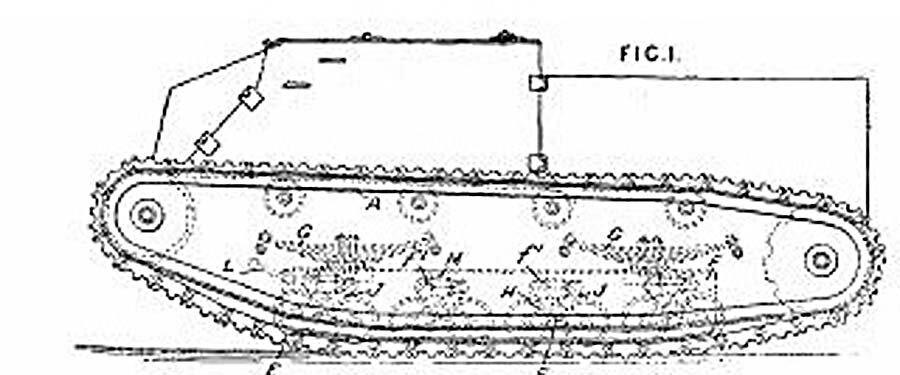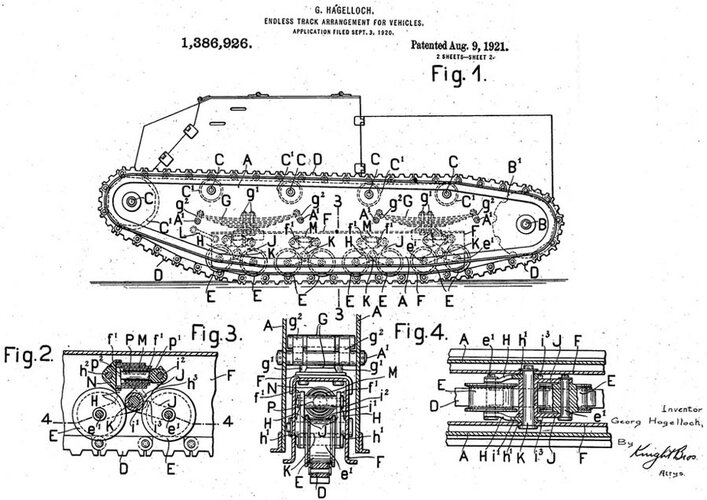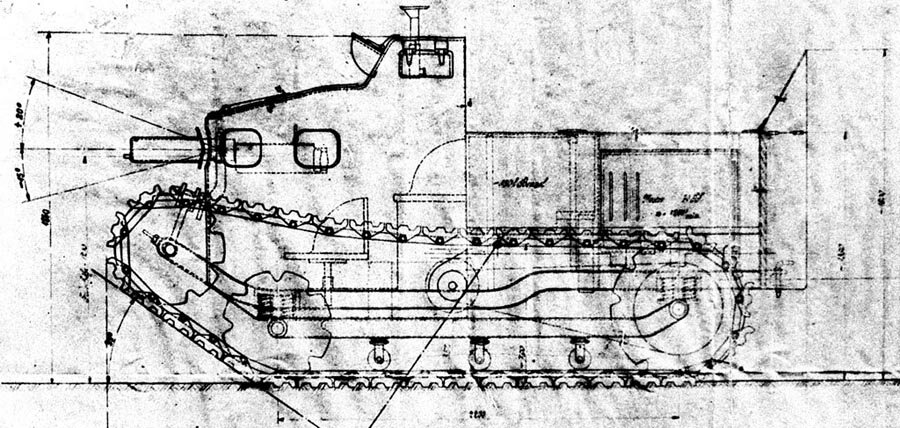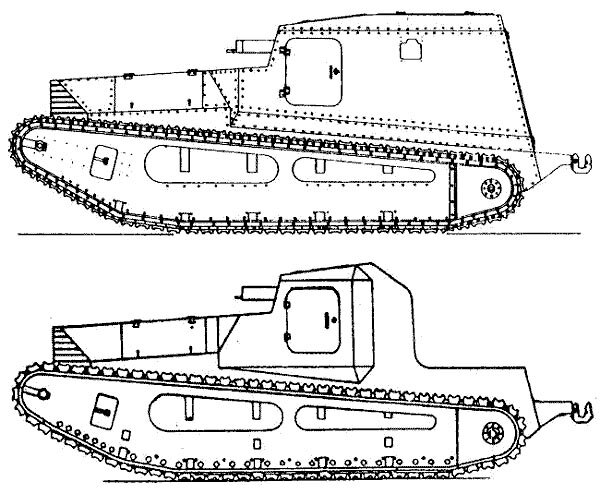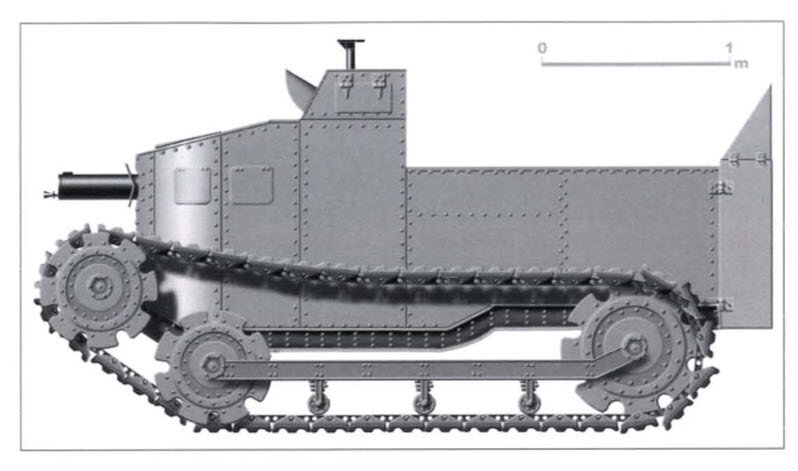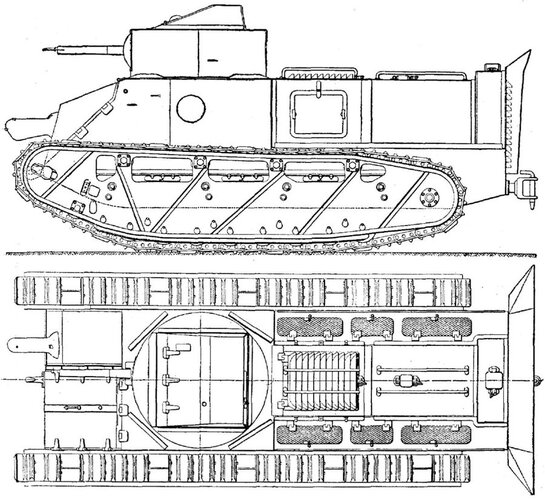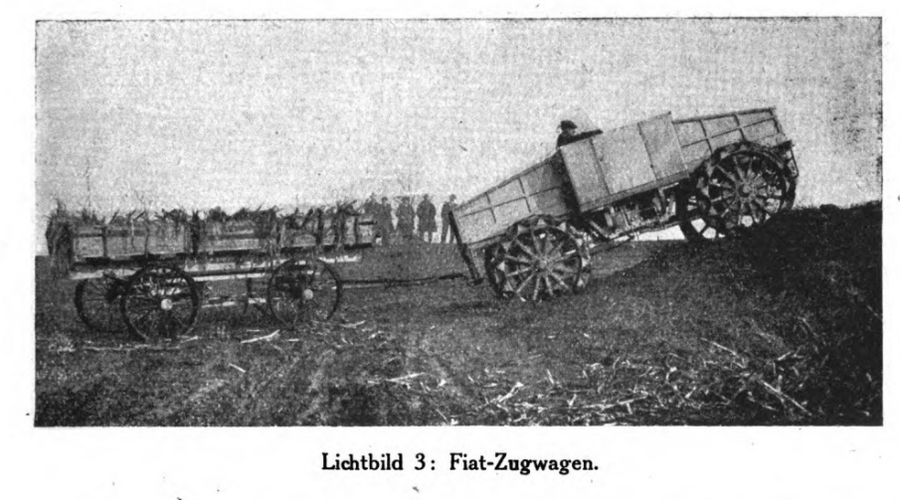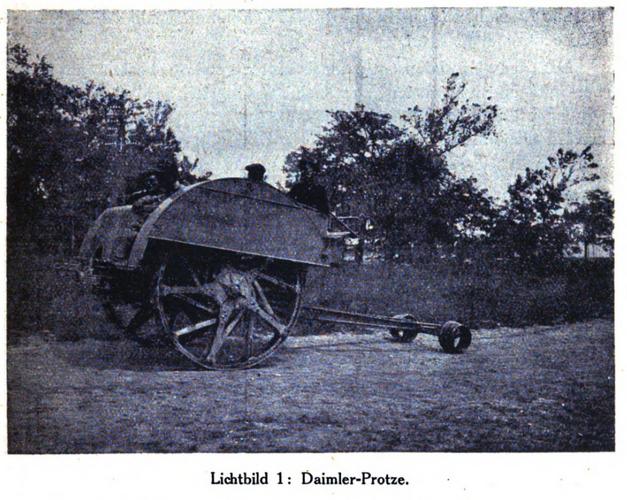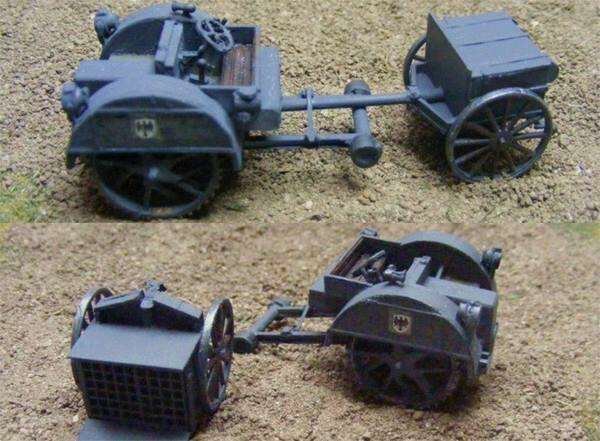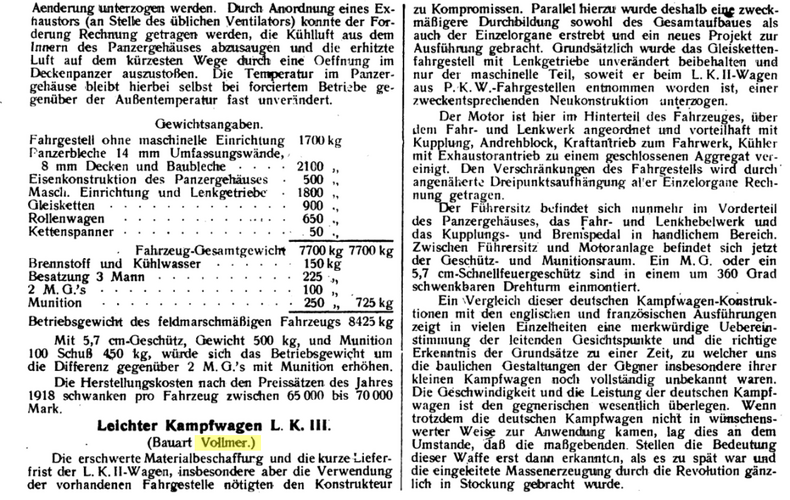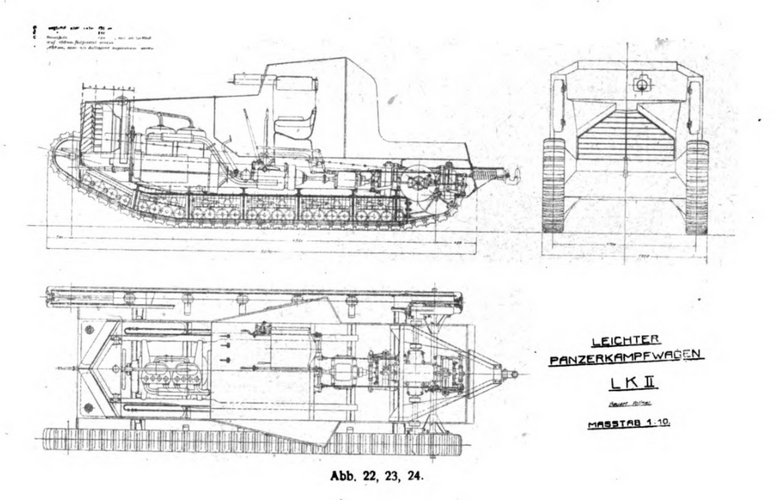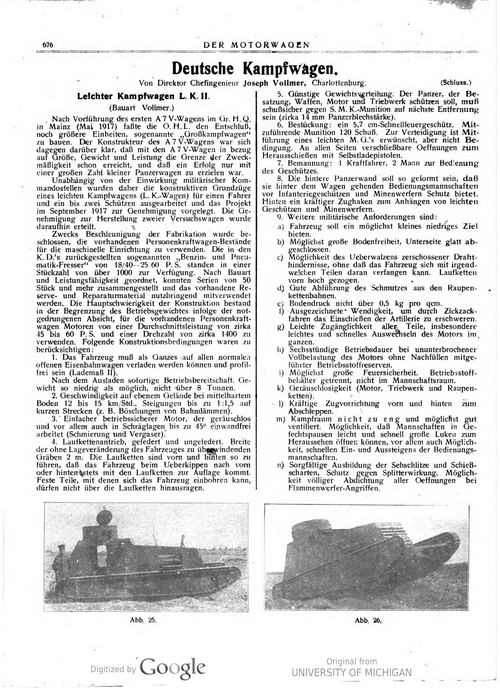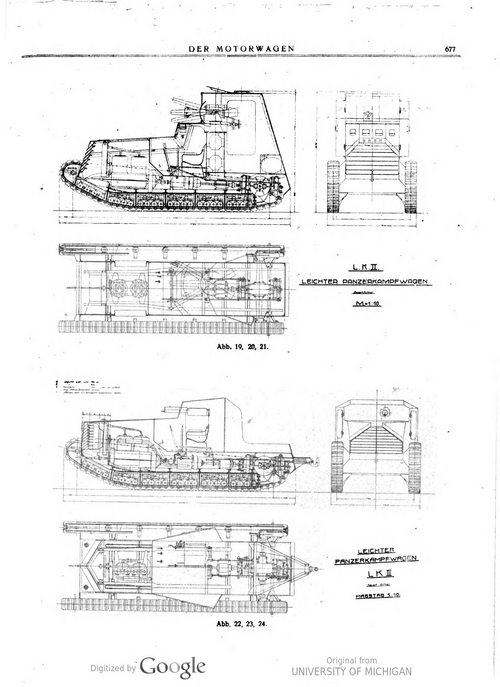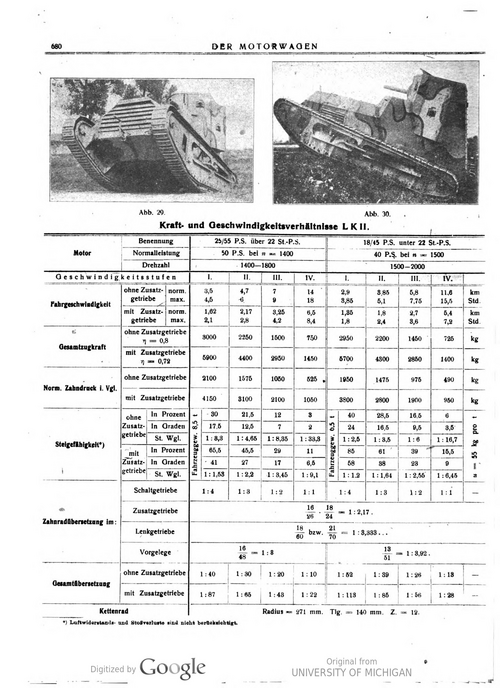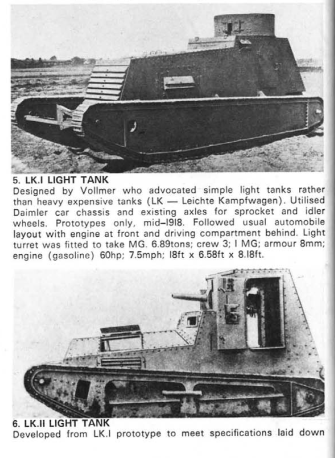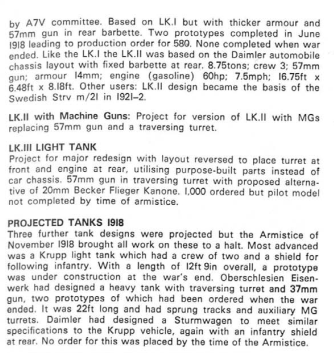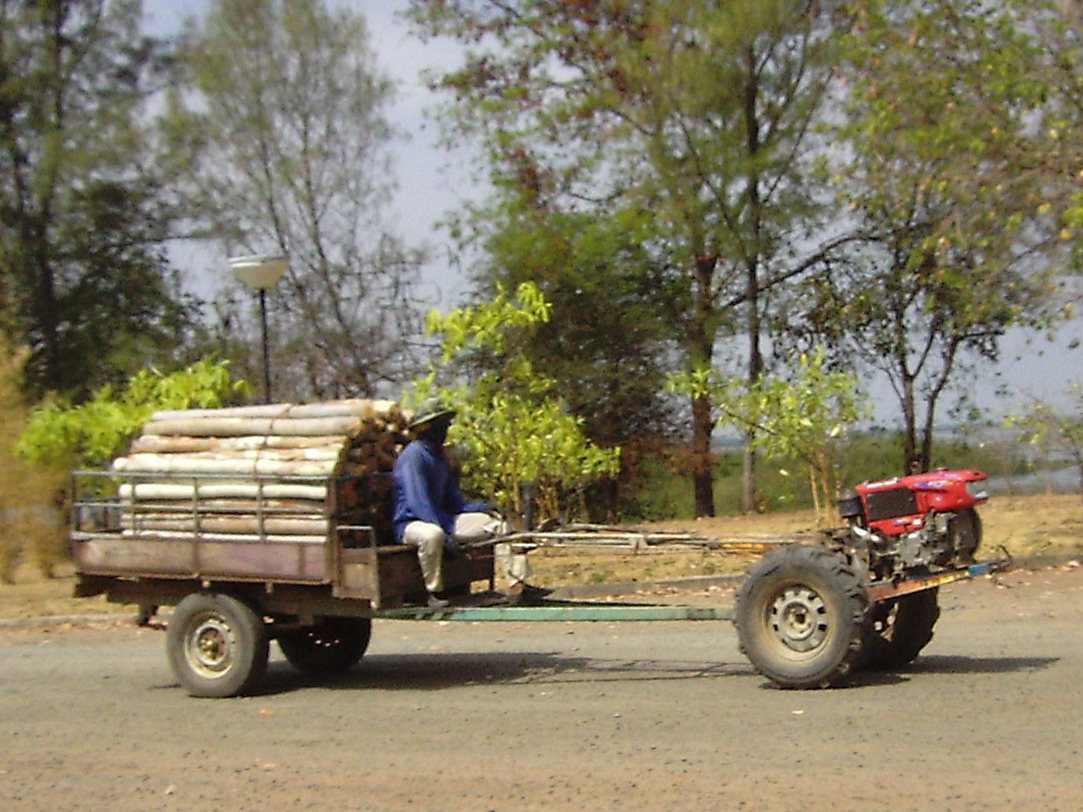The more one stirs around after the
Kraftprotze, the muddier the waters seem to get!
According to Yuri Pasholok, Krupp's
Kraftprotze design was submitted to the OHL on 22 May 1918. One image purporting to be the
Kraftprotze (1st image attached) is actually a variation on Krupp designer Georg Hagelloch's 1920 patent application drawings (2nd image attached). According to Yuri Pasholok, the
Kleiner Sturmwagen (3rd image) was an odd rear-engined vehicle with a pivoting MG 08 mount at the very front of the hull. That
Kleiner Sturmwagen concept (particularly its suspension) would then be improved upon in that Hagelloch patent drawing.
--
https://www.tankarchives.ca/2016/06/krupp-leichttraktor-rival-with-no-future.html
The original
Kleiner Sturmwagen light tank concept was a 1917 Krupp/DMG joint effort - by Hagelloch and Erich Wölfert amongst others. This design was presented at the Krupp offices in Essen during a conference on 13 June 1918. The unbuilt
Kleiner Sturmwagen concept competed unsuccessfully with
ing Joseph Vollmer's LK II (which was approved for further development a week later). [1] Although draughted by the same design department around the same time, Krupp's
Kleiner Sturmwagen doesn't seem to have a great deal in common with their submitted
Kraftprotze concept.
According to another website - armor.kiev.ua - Vollmer and Krupp designers worked together on "an armoured artillery tractor-transporter ... developed on the LK-II chassis." An illustration (4th image) is meant to show that joint project transport design (top) and an LK II-based tow-hitched
Kraftprotze concept.
--
http://armor.kiev.ua/Tanks/WWI/kaizer/kaizer5.html
Vollmer did draught two turretless LK IIs ... but
both were
Kraftprotze variants. According to Wolfgang Schneider and Rainer Strasheim (
German Tanks in World War I: The A7V and Early Tank Development, Schiffer Publishing, Atglen, PA, 1990) that upper sideview drawing represents a Vollmer LK II
Kraftprotze concept with a vehicle crew of three plus raised rear armour panels to protect a gun crew of six. The bottom drawing appears to be the
Leichte-Zugmaschiene concept already discussed - ie: an LK II hull fitted with a similar fixed cupola to the upper vehicle but lacking its rear gun crew compartment.
Vollmer's LK II
Kraftprotze concepts remained paper exercises - according to Strasheim, drawn mainly to "placate" OHL section head,
Oberstleutnant Max Bauer. At any rate, makers Steffen & Heymann were already having trouble delivering base LK II models. I suspect that 'armor.kiev.ua' author S. Fedoseev (or article preparator Denis Tumanov?) have conflated the Vollmer and Krupp
Kraftprotze designs But, in reality, these design efforts likely remained quite separate. Does anyone know for sure?
__________________________________
[1] In this case, Vollmer's position as chief designer for the Kfz-Abteilung at the Kriegsministerium obviously presented him with an 'inside' advantage over the combined industrial might of Krupp and Daimler.
On the attached drawing of the
Kleiner Sturmwagen, note the large panel at the rear. This panel was reportedly meant to act as a shield to protect infantry advancing behind the
Kleiner Sturmwagen.

